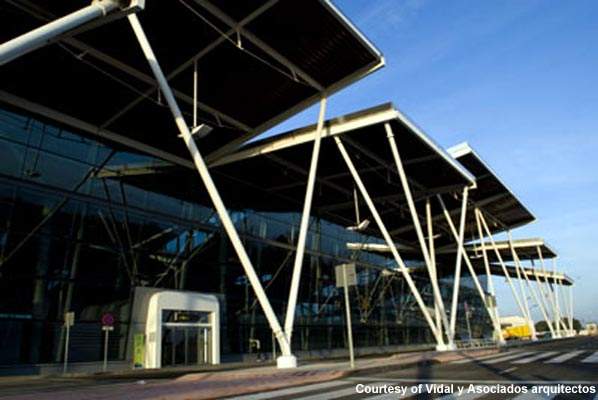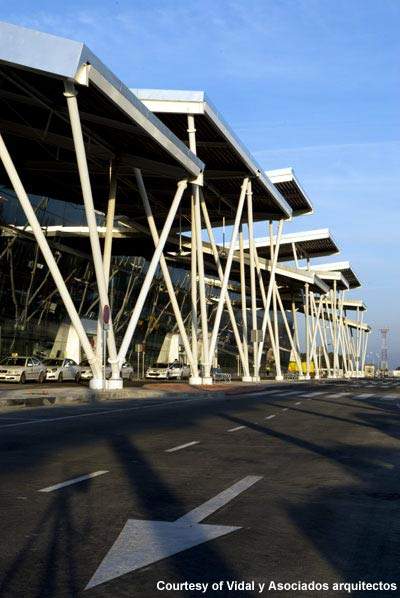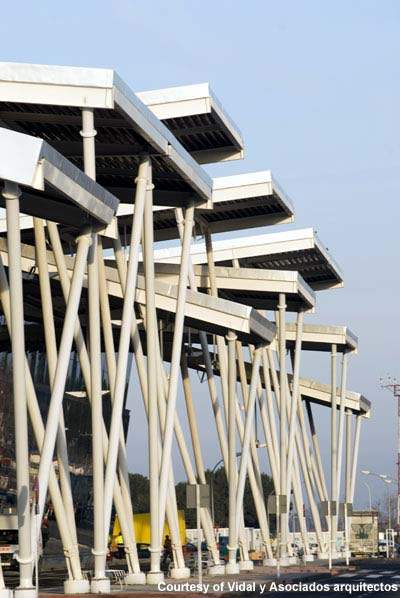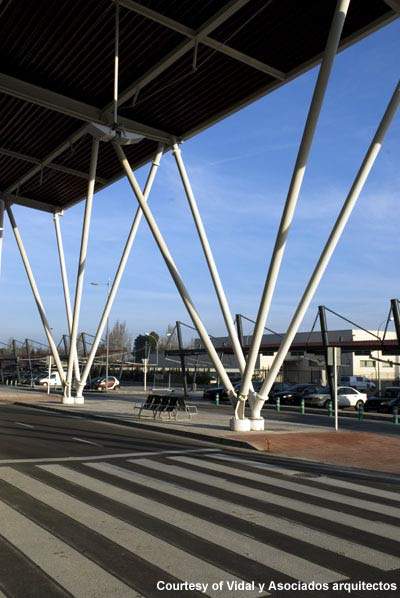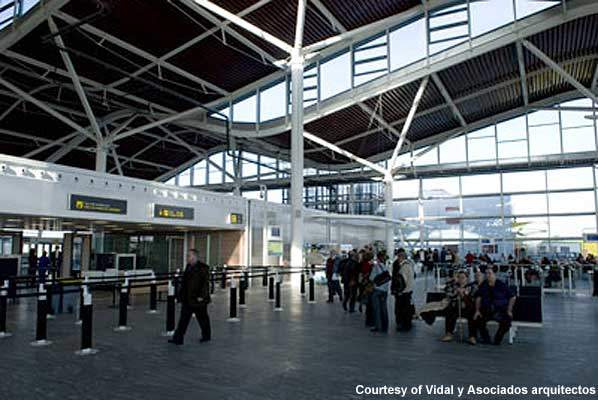Zaragoza Airport is a well-founded commercial airport that is situated near Zaragoza in central Spain. The airport is located around 16km west of the centre of Zaragoza, 270km west of Barcelona, and 262km northeast of Madrid.
The airport serves as a military airport and is also an emergency landing site for the US space shuttle. There are two runways, which are the 12R/30L (3,718m, 12,200ft) paved in concrete and the 12L/30R (3,024m, 9,921ft) paved in asphalt.
The commercial area of the airport is owned and operated by Aeropuertos Españoles y Navegacion Aerea. Passenger numbers in 2007 were over 500,000 representing an increase of 17.5% over 2006 indicating that the airport is growing in usage and that its catchment area of 20 million people within a 300km radius are taking it seriously.
Expansion for Zaragoza Expo
From June to September 2008 Zaragoza will host one of the largest festivals / conferences in the world concerning water and sustainable development (Agua y Desarrollo Sostenible).
The expo is expecting to host 7.5 million visitors and the majority of these will travel to the area by air. The operators of Zaragoza airport realised this in 2004 and decided to solve two problems in one by expanding the terminal building. This would provide capacity for the Zaragoza Expo and also provide for the increased numbers of tourists visiting the area. The investment into the airport between from April 2004 to December 2007 amounted to €56.1m and of this €40m has gone
towards the terminal extension.
Terminal project
Zaragoza Airport is being put forward as a landmark for the expo and as such its architecture has had to reflect the subject of the festival, which is water and sustainability. The new terminal expansion was designed by Vidal y Asociados arquitectos as the ‘new gateway to Europe’ (the engineering work was carried out by Sener Engineering).
The design is in a flowing wave like style which also incorporates all of the expected green features such as natural cooling and maximum use of natural light as well as and most importantly recycling of wastewater and use of rainwater for irrigation.
The building itself is composed of 11 modules, which are set in an alternative pattern so as to resemble the water movement that is relevant to the expo. The terminal design is also very representative of functionality and adheres to three basic principles: flexibility, articulation and openness. The modular structure will also allow future growth into new areas when required, the layout allows for a sequential flow of passengers and the maximum use of natural light encourages total openness.
The outside regions of the airport have been landscaped to preserve the propensity of green circumscribing the terminal. The terminal building, which was built on the west side of the existing building covers a total floor area of 11,000m² and will host one million passengers a year.
The expansion building is 172m long, 48m wide and has three levels. There is 8,250m² of floor space on the ground floor where departures, arrivals and check-in is situated. The first floor has 1,000m² of floor space for offices and administration as well as an airside viewpoint and the basement floor contains plant, and other airport infrastructure.
Other Zaragoza projects
With the terminal being expanded there were other areas of the airport requiring attention. One of the first projects undertaken to encourage more operators at the airport was the expansion of the apron parking for aircraft. The total investment for this project including project management and construction came to €5.1m.
The works were intended to allow increased operations, especially low-cost operators and also the easier movement and parking of the larger aircraft used in air cargo traffic. The area was expanded by approximately 50,000m² from 94,000m² to 144,000m². The extended area was developed from the northwest edge of the airports land in the direction of the air force base.
Other Zaragoza Airport improvements have included remodelling and expansion over an area of 67,000m², with necessary facilities, such as drainage, lighting, signage and landscaping, as well as the demolition of the old power plant, where there are now new parking spaces. The airport has 19,000m² of new roads and 34,350m² of new public car parks.
New radio
In 2007 Motorola won a contract through Amper Sistemas SA to supply the airport with a new IP based TETRA (terrestrial trunked radio) digital radio system to help coordinate airport operations.
The new system including a Dimetra IP Compact solution was completed by July 2008. The airport’s old analogue system has now been superseded. The ETSI TETRA compliant system provides an always on mobile voice and data channel system for internal and external airport communication.

